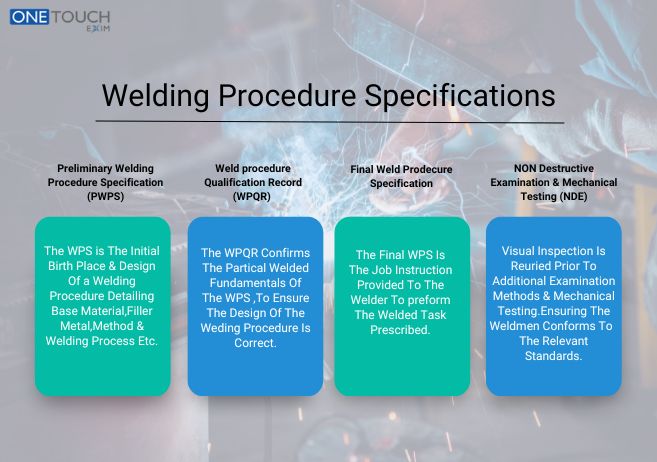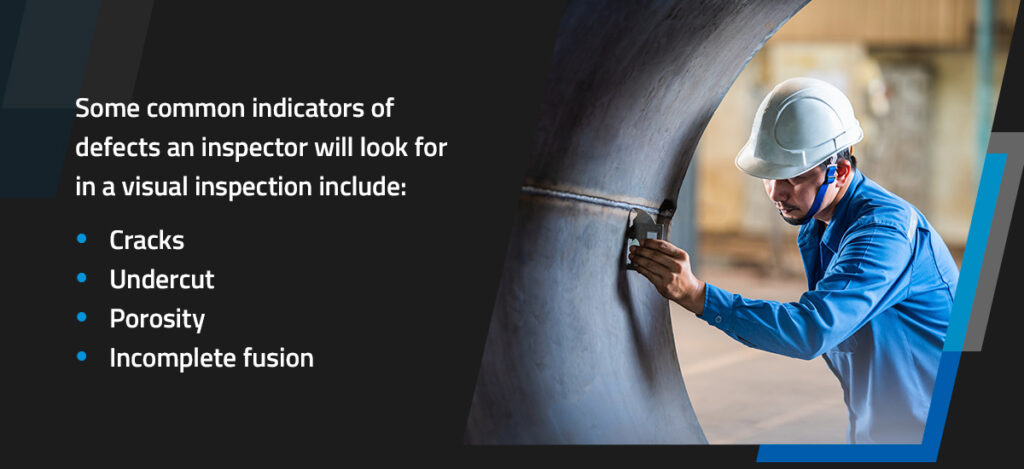What to Get out of a Comprehensive Welding Inspection Racine
What to Get out of a Comprehensive Welding Inspection Racine
Blog Article
Ingenious Approaches to Fillet Weld Inspection and Screening: Enhancing Weld High Quality and Conformity Specifications
In the realm of welding, the high quality and stability of fillet welds play an essential duty in making sure the structural sturdiness and dependability of different industrial components. With the constant drive for enhanced performance and compliance with strict criteria, the expedition of innovative approaches to fillet weld inspection and screening has come to be important. As industries advance, the standard approaches may no much longer be adequate in meeting the demands of modern welding applications. By accepting innovative innovations and techniques, a new horizon of opportunities emerges in the realm of weld high quality assessment and adherence to compliance standards.
Advanced Non-Destructive Testing Methods
Making use of state-of-the-art modern technologies, progressed non-destructive screening methods play a crucial duty in ensuring the integrity and quality of fillet welds. These techniques, such as phased range ultrasonic screening (PAUT) and magnetic bit testing (MPT), deal in-depth insights into the weld's internal framework without creating any damages to the material. PAUT, for example, utilizes multiple ultrasonic elements to inspect the weld from various angles, supplying a detailed visualization of prospective issues like absence of combination or cracks.
By utilizing these innovative non-destructive testing strategies, weld assessors can properly analyze the high quality of fillet welds, guaranteeing conformity with market standards and guidelines. The capacity to detect problems early on not only enhances weld high quality but additionally protects against costly rework or failings in architectural integrity, highlighting the relevance of these innovative testing approaches in welding inspections.
Robotics and Automation in Evaluation
The combination of robotics and automation has revolutionized the evaluation procedure for fillet welds, improving effectiveness and accuracy in quality assessment. Robotics use specific control and repeatability in checking welds, making sure constant and trusted results. Automated systems can be set to adhere to details evaluation courses, ensuring detailed protection of welds and reducing the risk of human error.
Robot examination systems furnished with sophisticated sensing units can discover and gauge weld functions with high precision, supplying thorough information for analysis. These systems can recognize defects such as splits, absence of blend, and porosity, enabling timely rehabilitative activities to be taken. Furthermore, robotics and automation enable for real-time data collection and analysis, offering immediate responses to operators and promoting quick decision-making processes.
Furthermore, the usage of robotics and automation in fillet weld evaluation enhances general productivity by lowering assessment times and enhancing evaluation throughput. By enhancing the inspection procedure, makers can ensure weld top quality and conformity standards are fulfilled successfully, inevitably bring about cost savings and enhanced item quality.
Making Use Of Artificial Intelligence for Analysis
Expert system plays a crucial duty in improving the efficiency and precision of evaluation in fillet weld evaluation procedures. By harnessing the power of AI, examiners can improve the analysis of weld high quality and conformity standards, resulting in a lot more accurate and trusted results. AI formulas can rapidly process vast quantities of information from weld inspections, discovering defects or incongruities that may be challenging to relate to the naked eye. This advanced modern technology makes it possible for real-time monitoring of weld quality, permitting prompt restorative activities to be taken if any kind of concerns are identified.
Moreover, AI systems can discover from past evaluation data, consistently boosting their capacity to identify possible issues and variances in fillet welds. This flexible discovering capability enhances the total quality assurance process, minimizing the possibility of human mistake and making certain that welds fulfill the required standards. By integrating man-made knowledge into fillet weld evaluation, sectors can attain greater levels of efficiency, uniformity, and compliance in their evaluation methods.
Portable Tools for On-Site Evaluation
 Enhancing field inspection efficiency, the adoption of portable devices transforms on-site assessment processes for fillet welds. These devices use versatility and ease, permitting examiners to carry out extensive evaluations in various areas, consisting of tough or remote environments. Portable devices such as ultrasonic screening tools, magnetic fragment inspection devices, and electronic radiography systems give real-time data and high-resolution imaging abilities, allowing quick decision-making and instant feedback on weld high quality.
Enhancing field inspection efficiency, the adoption of portable devices transforms on-site assessment processes for fillet welds. These devices use versatility and ease, permitting examiners to carry out extensive evaluations in various areas, consisting of tough or remote environments. Portable devices such as ultrasonic screening tools, magnetic fragment inspection devices, and electronic radiography systems give real-time data and high-resolution imaging abilities, allowing quick decision-making and instant feedback on weld high quality.One substantial advantage of mobile tools is their capability to simplify inspection treatments, minimizing downtime and improving overall performance. Assessors can easily transfer these devices to different task sites, eliminating the need for transferring hefty machinery or elements to off-site facilities. Furthermore, the mobility of these devices advertises cost-effectiveness by minimizing transport costs and increasing evaluation timelines.
Furthermore, the usage of mobile tools for on-site examination advertises proactive quality assurance actions, as assessors can without delay identify and resolve any kind of possible welding problems or discrepancies. By integrating these cutting-edge technologies into on-site examination methods, welding specialists can make sure compliance with sector requirements and boost weld top quality, eventually causing boosted structural honesty and security in numerous welding applications.
Combination of Data Administration Systems
Having optimized on-site examination processes via the usage of portable tools, the following stage involves the seamless integration of information administration systems to further boost effectiveness and information evaluation capacities in fillet weld examination and testing. Welding Inspection Racine. By incorporating data administration systems into the evaluation procedure, organizations can streamline data collection, storage space, and evaluation. This combination enables real-time monitoring of weld high quality, prompt recognition of defects, and timely decision-making to rectify any issues that might develop during the examination process
Information administration systems play an important role in streamlining assessment data, assisting in easy gain access hop over to here to for accredited employees, and making sure data honesty and safety and security. With the integration of these systems, inspectors can generate comprehensive records, track historical data for pattern analysis, and boost total process performance. The integration of information monitoring systems makes it possible for seamless interaction between different stakeholders included in the inspection procedure, fostering cooperation and improving total quality control procedures. Inevitably, the assimilation of data management systems offers to boost the requirements of fillet weld assessment and screening, making certain conformity with industry policies and improving weld quality.
Conclusion
In final thought, innovative strategies to fillet weld inspection and testing have considerably improved weld top quality and conformity requirements. Advanced non-destructive testing methods, robotics, check out here automation, expert system, portable devices, and information administration systems have actually transformed the way weld assessments are carried out. By using these technologies, sectors can guarantee that welds meet the required high quality standards and laws, inevitably boosting general efficiency and safety in welding procedures.

By using these sophisticated non-destructive testing techniques, weld inspectors can properly evaluate the top quality of fillet welds, ensuring compliance with sector criteria and regulations. Portable devices such as ultrasonic testing tools, magnetic bit evaluation devices, and digital radiography systems give real-time information and high-resolution imaging abilities, enabling quick decision-making and instant feedback on weld quality.
Having optimized on-site assessment procedures with the use of portable devices, the next stage entails the seamless combination of data monitoring systems to further boost performance and information evaluation abilities in fillet weld evaluation and screening (Welding Inspection Racine). Eventually, the assimilation of information monitoring systems serves to raise the standards site of fillet weld evaluation and screening, making certain compliance with market guidelines and improving weld quality
 In conclusion, innovative strategies to fillet weld examination and screening have substantially improved weld top quality and compliance standards.
In conclusion, innovative strategies to fillet weld examination and screening have substantially improved weld top quality and compliance standards.Report this page